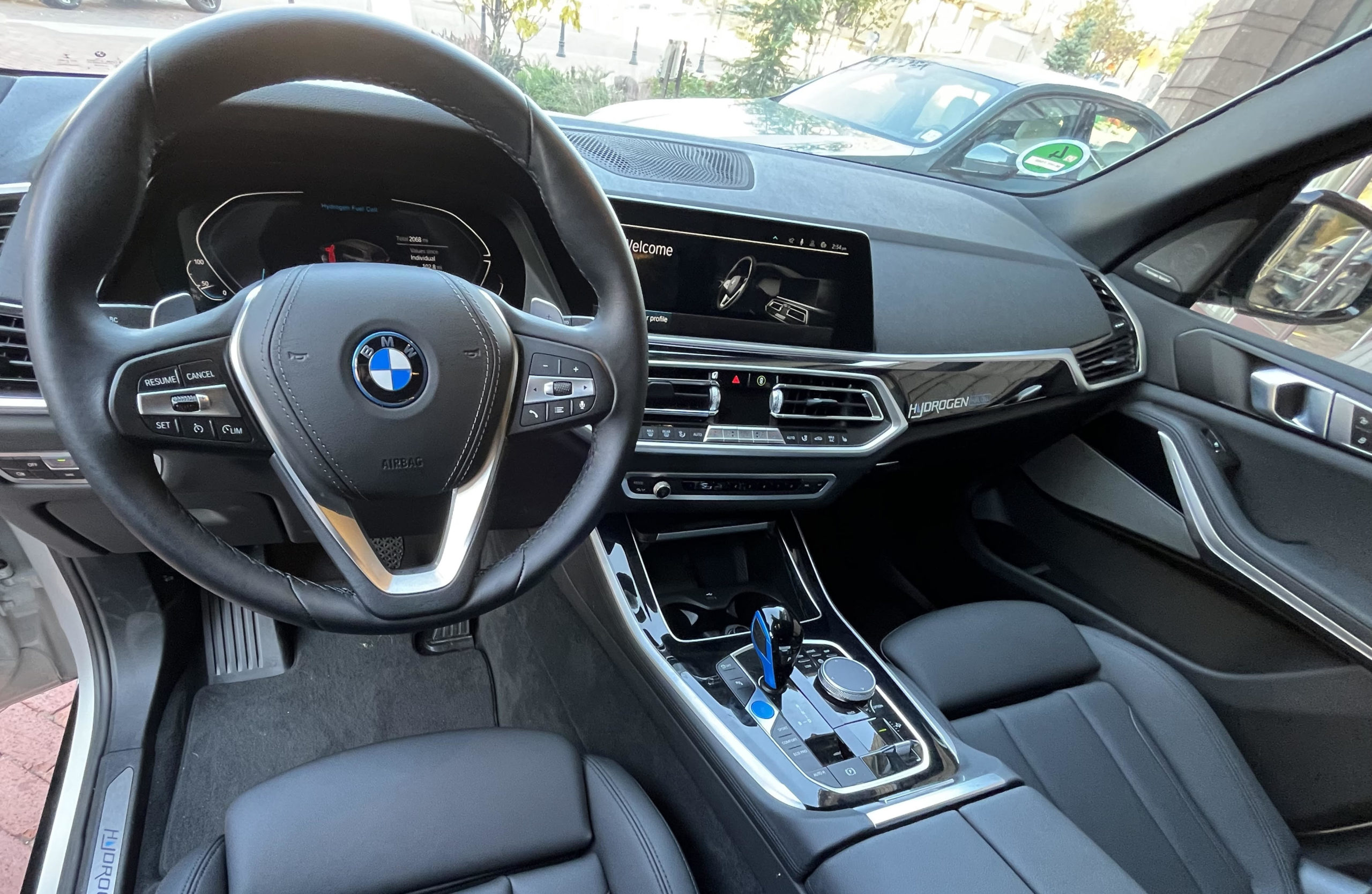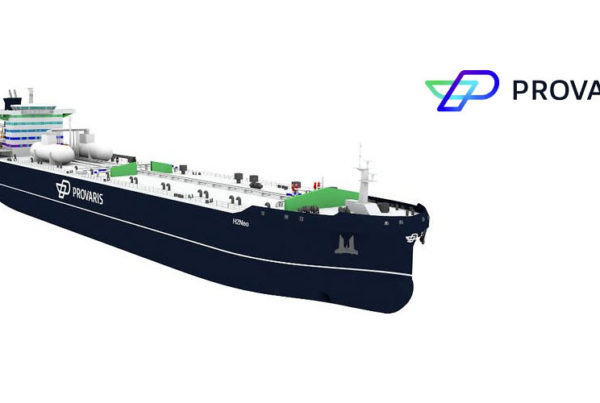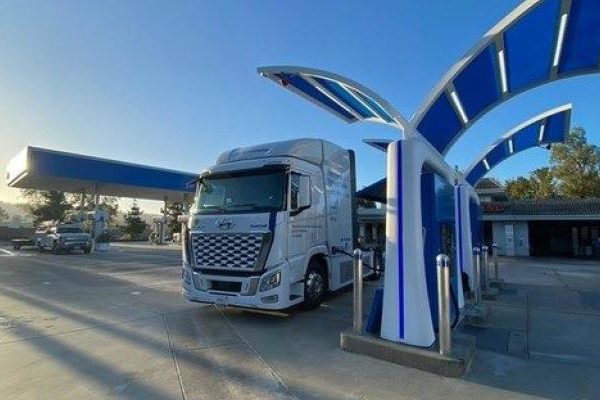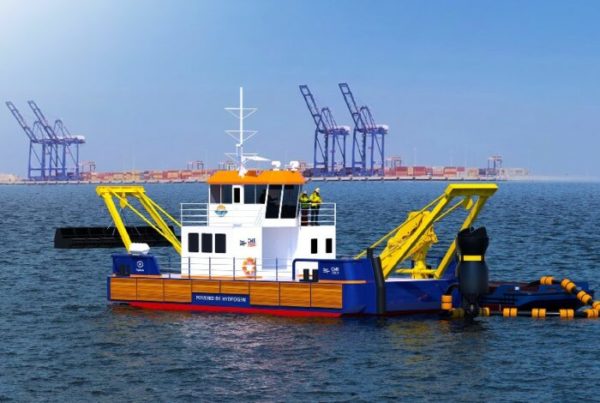
Driving the iX5 hydrogen concept felt similar to a high-powered BEV such as the Lucid Air or Kia EV6 GT. Handling was similar to a gas-powered BMW 5-Series, which is to say it was very responsive.
GREENVILLE, SC– BMW of North America is rolling out its iX5 Hydrogen pilot vehicle on a “world tour” designed to both gather feedback and educate possible stakeholders.
We had the chance to drive the concept vehicle – a 5-Series with the internal combustion engine replaced with a hydrogen fuel cell stack – during two test drives of 30 and 90 minutes, respectively.
The first drive was in lower-speed situations on city streets, while the second opportunity included a long period on an interstate highway with several instances where rapid acceleration was necessary for merging.
 The driving experience felt similar to a high-powered BEV such as the Lucid Air or Kia EV6 GT. Handling was similar to a gas-powered BMW 5-Series, which is to say it was very responsive. The weight of the car is on par with a hybrid x5 (or comparable PHEV). The vehicle has normal BMW features including sport, comfort and Eco mode.
The driving experience felt similar to a high-powered BEV such as the Lucid Air or Kia EV6 GT. Handling was similar to a gas-powered BMW 5-Series, which is to say it was very responsive. The weight of the car is on par with a hybrid x5 (or comparable PHEV). The vehicle has normal BMW features including sport, comfort and Eco mode.
The test vehicles, which were driven by several dozen journalists each day during the BMW “Test Fest” event, were refueled each night at BMW’s nearby Spartanburg, SC, plant.
Jurgen Güldner, general program manager for hydrogen technology, says the two iX5s are part of a 100-vehicle pilot fleet the automaker created to test performance in real-world conditions.
He estimates BMW will be selling hydrogen vehicles by the end of the decade.
“We’re basically following the same steps that we did with our battery-electric models,” he says. “There we had a mini-pilot fleet and a BMW 1-Series called ActiveE pilot series. And with that learning then, we brought out the i3 as our first battery-electric car.
“We need a little bit more infrastructure in terms of hydrogen fueling stations in Europe, in Asia, hopefully also in the U.S. We need to work a little bit more on the technology. There are a few things that we would like to improve for the next generation…things like cost efficiency and power density.”

BMW’s hydrogen-fuel-cell electric vehicles will use the same architecture as the automaker’s BEVs, Güldner says.
“So, we’re working on reducing the diameter of the tanks such that we can put several tank vessels into the design space of the battery,” he says. “And that would then enable us to be very flexible in production – either produce a battery-electric car or a fuel-cell electric car where it’s the same base.”
The automaker has tested the concept vehicle in varying weather conditions in Germany, France, Sweden, Dubai, Seoul, Tokyo and, in the U.S., the West Coast and Denver.
“This is the pilot fleet we’re preparing, and then at some point, we’ll decide on a mass product,” Güldner says. “And then after that in the 2030s, there’s the possibility of a rollout in several models.”
But that depends on the market feedback and customer uptake, he says.
“So, our strategy really is to be flexible and to be prepared,” he says. “We’ve seen so many changes and so many different conditions also all over the world in terms of how fast the transition happens that being able to react quickly and to be flexible is really valuable for us as a company. And we are showing this with our current model lineup. A lot of models have gasoline, diesel, plug-in hybrid and battery-electric (versions), and they’re fully integrated.”
Fuel-cell costs are coming down, and Güldner says he expects them to continue to fall as development and testing continue.

“The nice thing about this fuel-cell technology is that the components that make up the system, for example, can be used for all kinds of applications,” he says. “So, the technology is very, very similar for trucks, for buses, for cars, for vans, even for airplanes. I know Airbus is looking into using fuel cells for airplanes.”
“The individual cells are the same that Toyota uses on the Mirai and now they have announced that they will have a second vehicle, the Crown, that has a fuel cell option,” Güldner says. “We have a very good collaboration. It’s not a joint venture, it’s really a partnership, but it’s only the individual cells that are produced by Toyota.”
Europe has been quicker to take to hydrogen vehicles than the U.S. The European Union is mandating hydrogen refueling and charging stations be built along all public roads through 2030. Stations will be built at intervals of 200 km (124 miles), he says.
There are 107 public and private stations in the U.S., mainly in California, compared to 276 stations in Europe and the Middle East, Güldner says.
Shaun Bugbee, executive vice president of operations for BMW of North America, says hydrogen is part of the company’s four-pronged drivetrain strategy along with BEVs, PHEVs and ICE technology.
“We think having access to four different drivetrain technologies really speaks to the potential in the market,” says Bugbee, who is responsible for BMW sales operations within the U.S.

Read the most up to date Fuel Cell and Hydrogen Industry news at FuelCellsWorks




